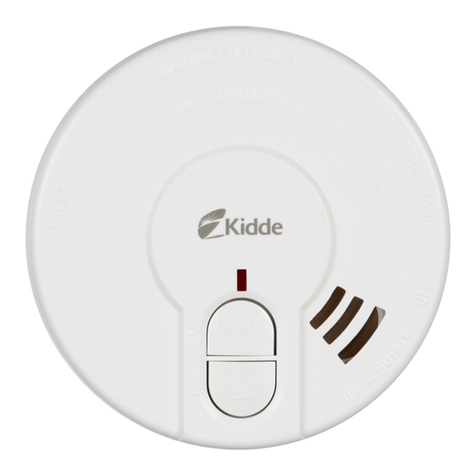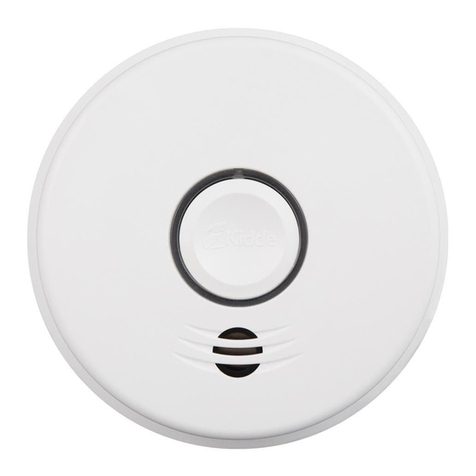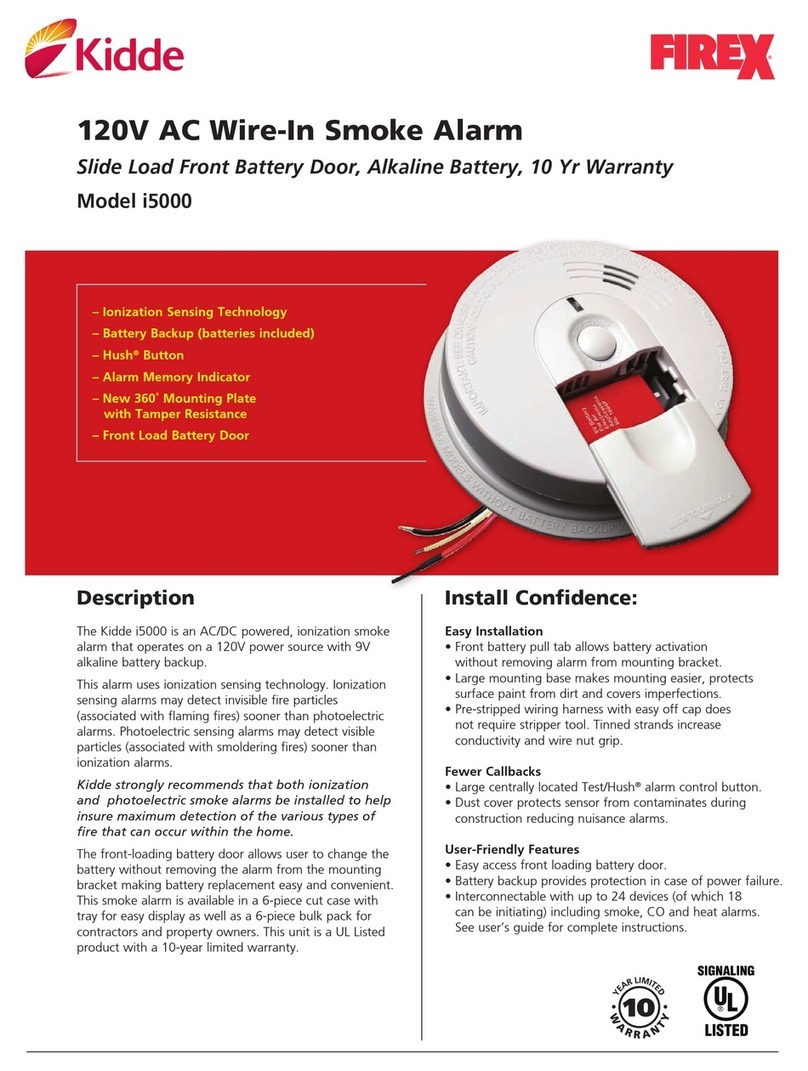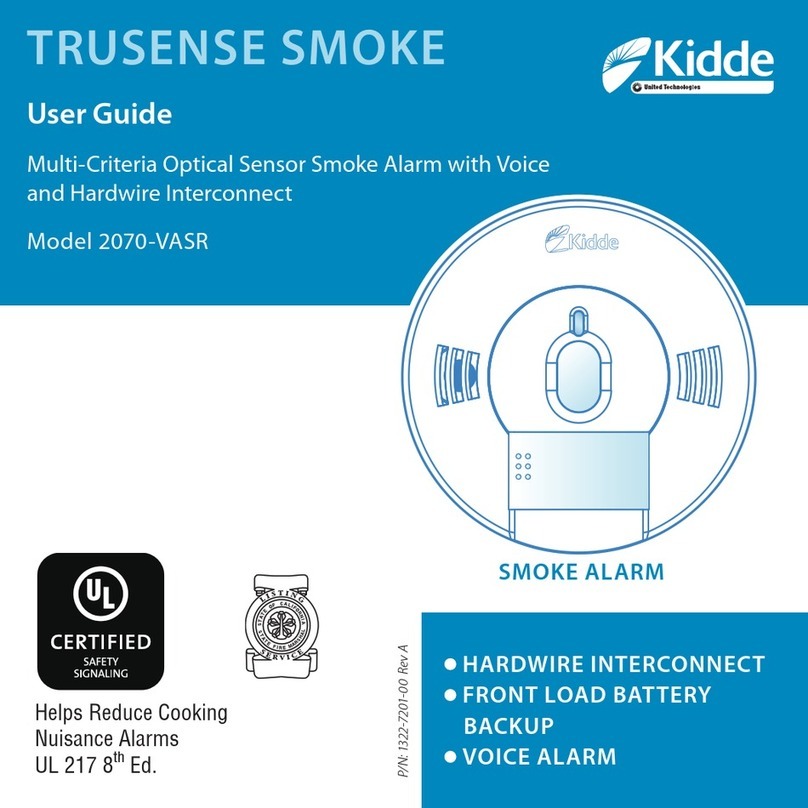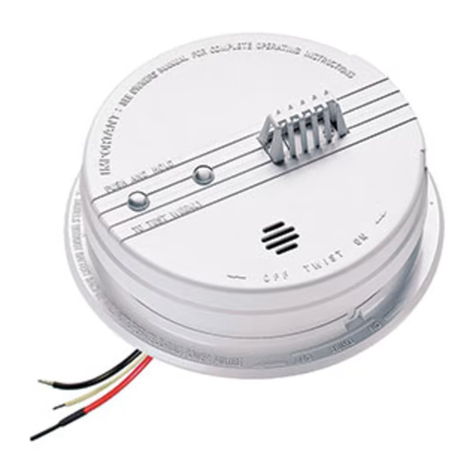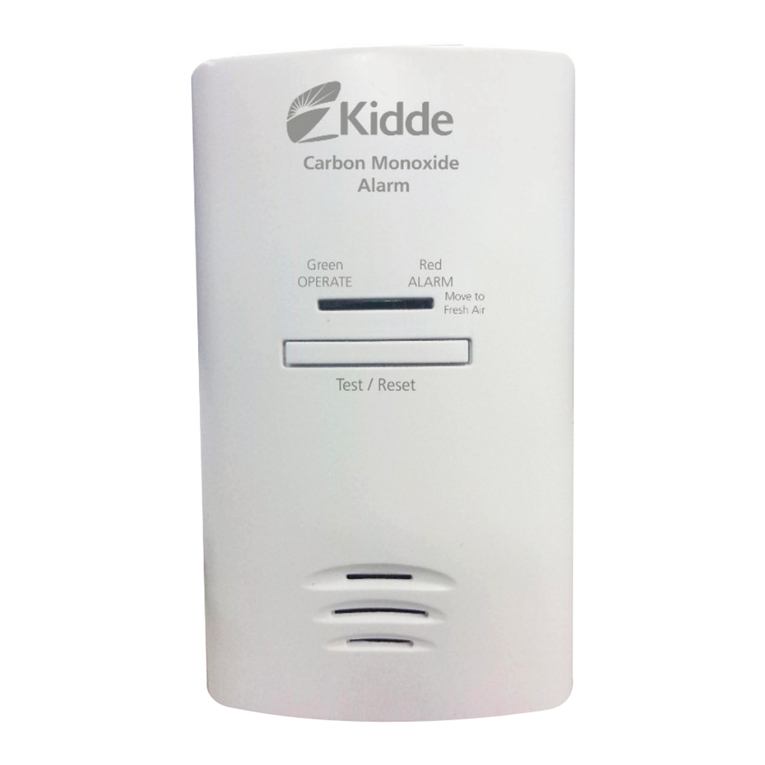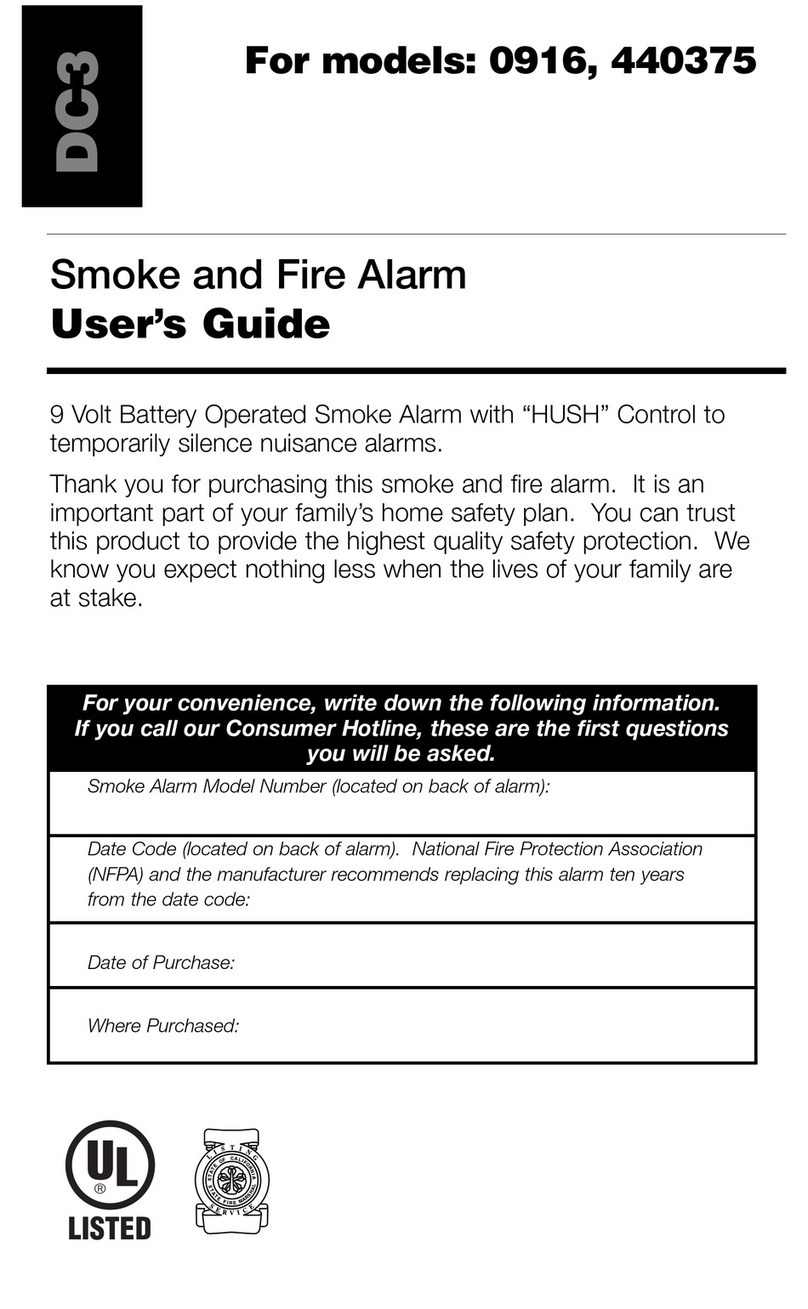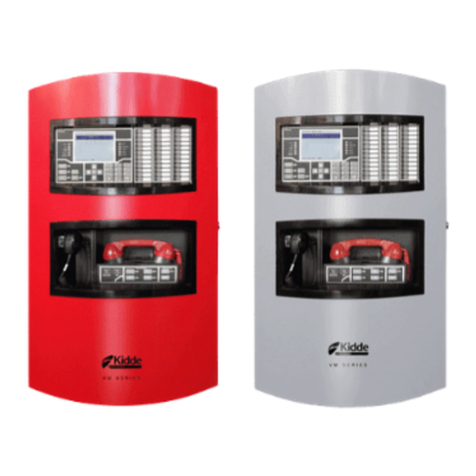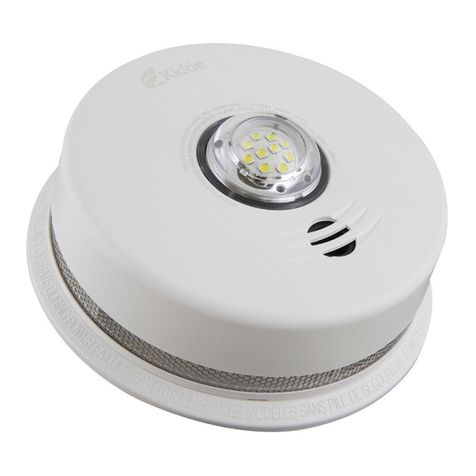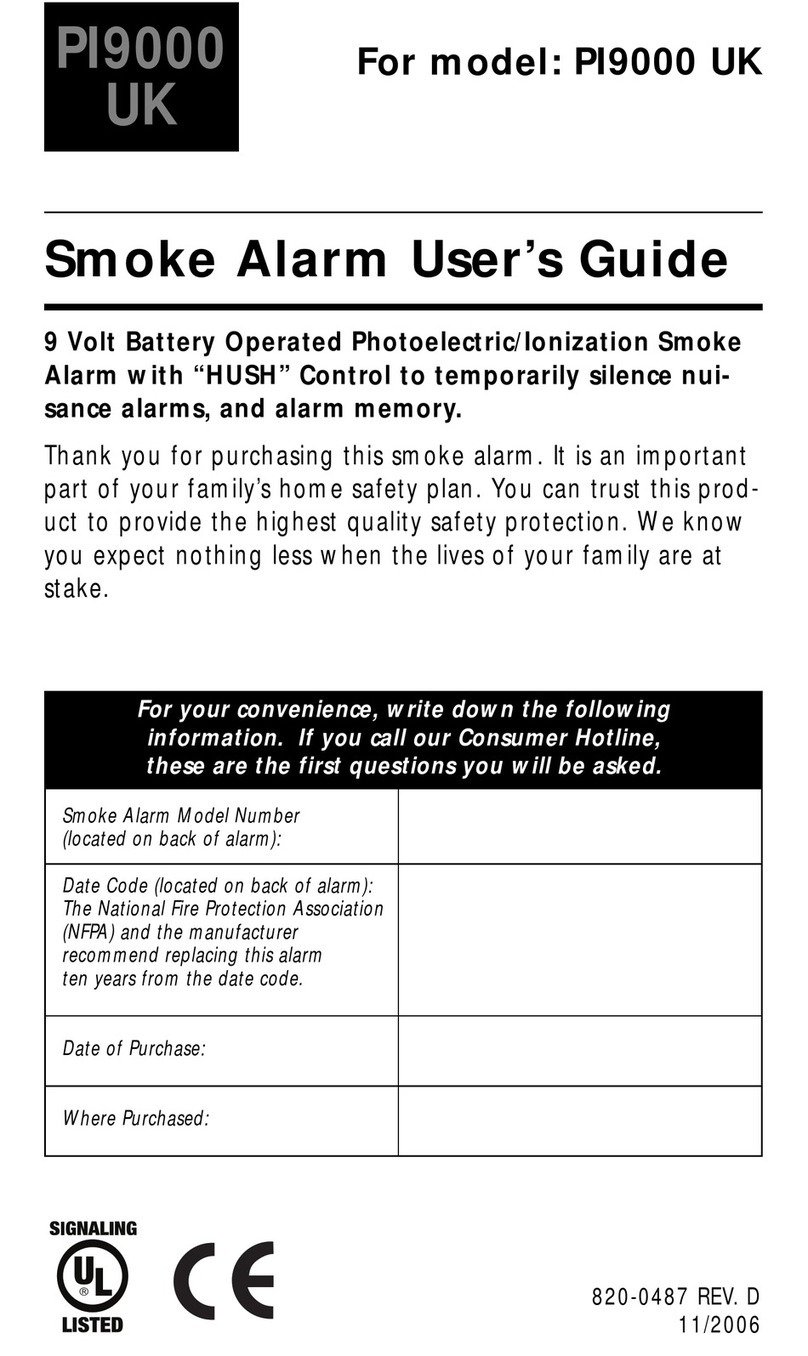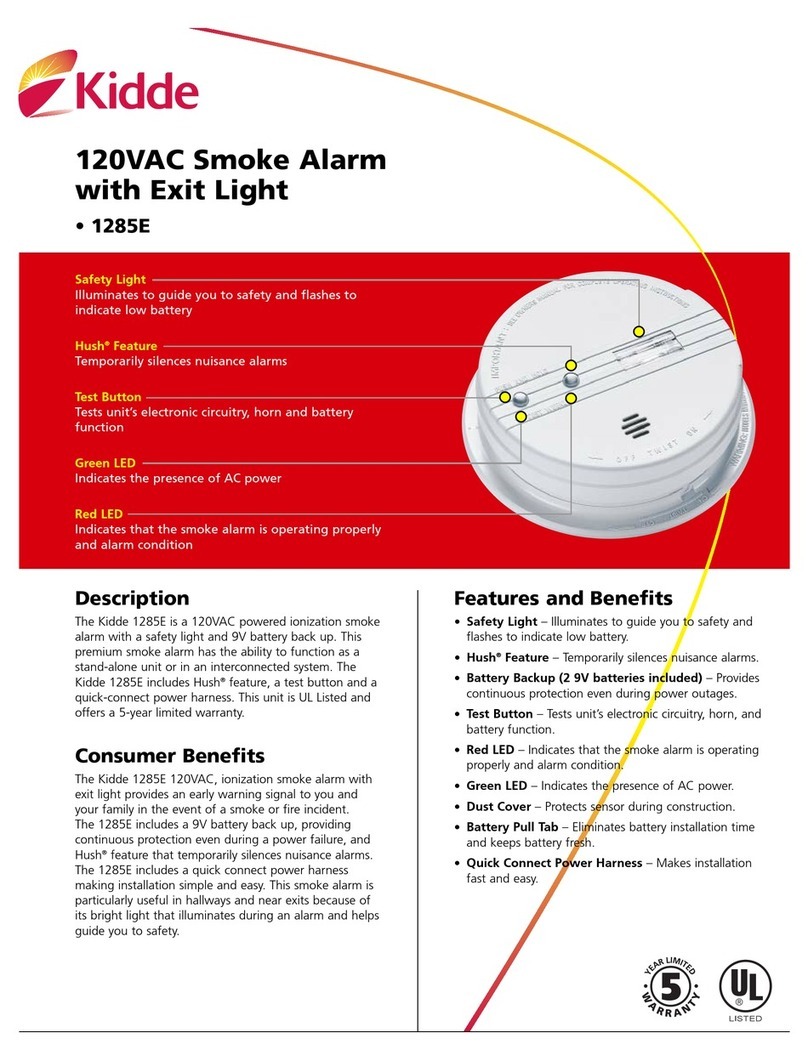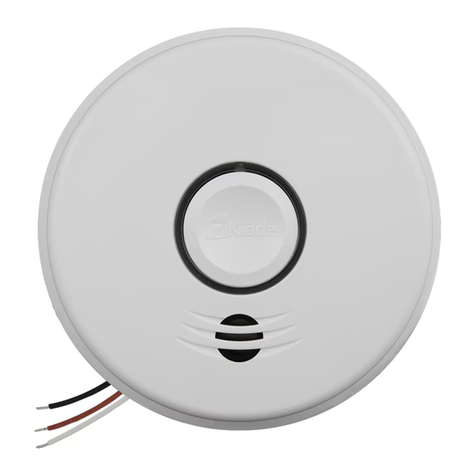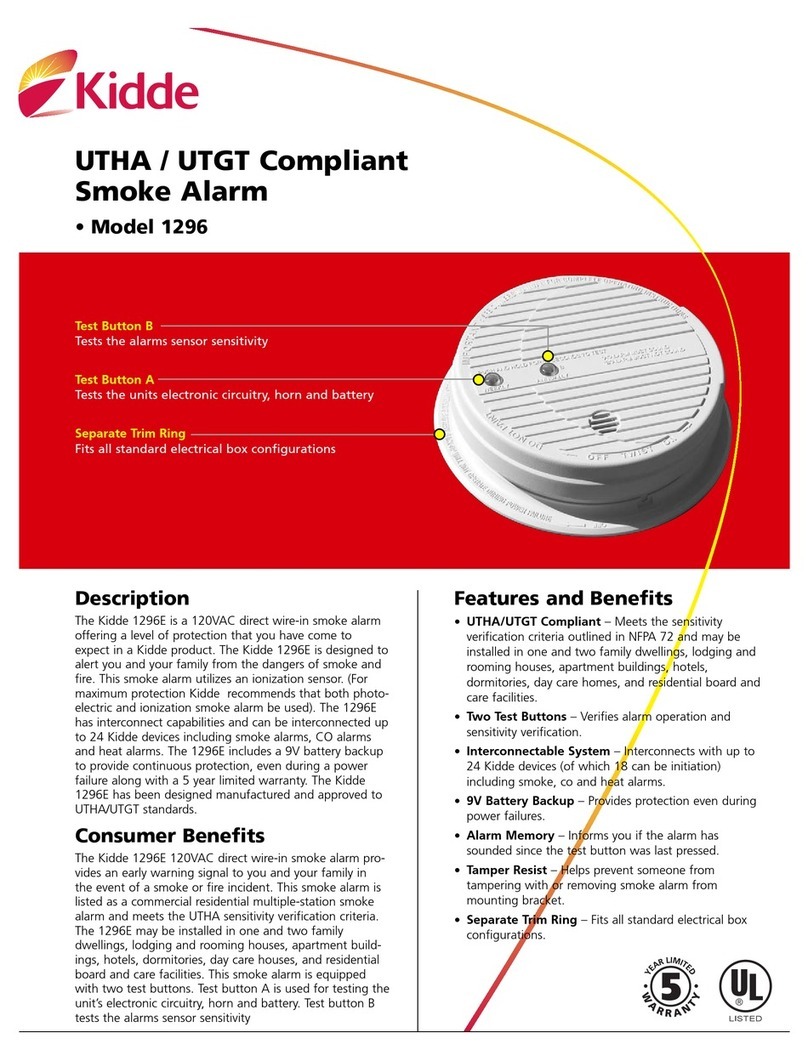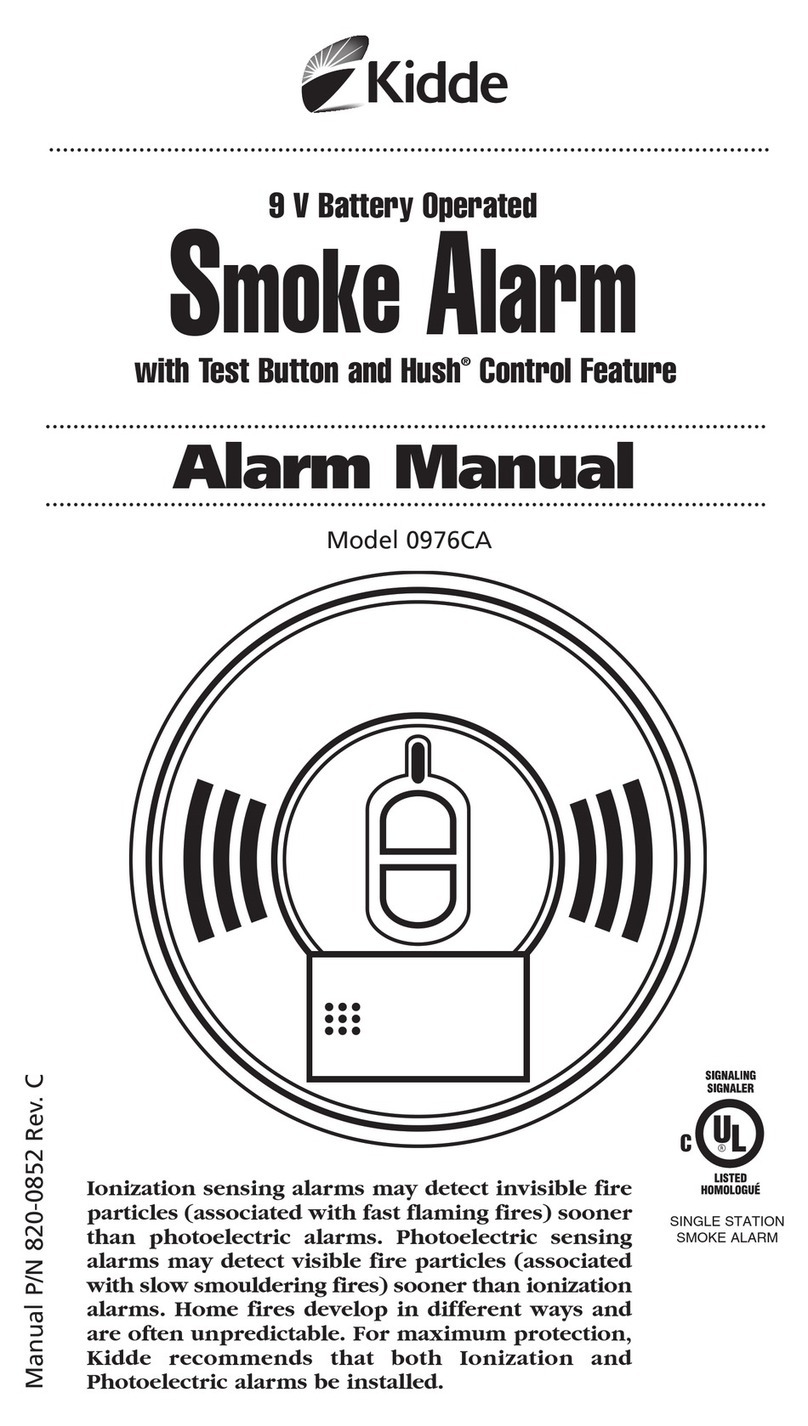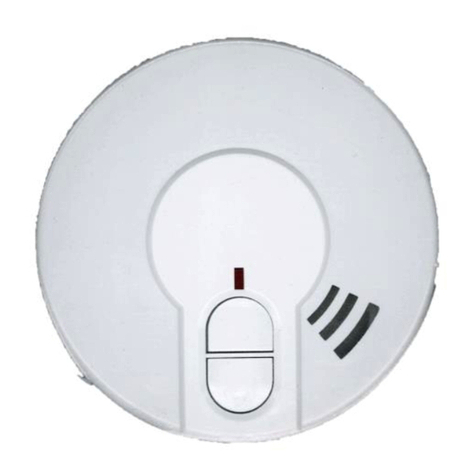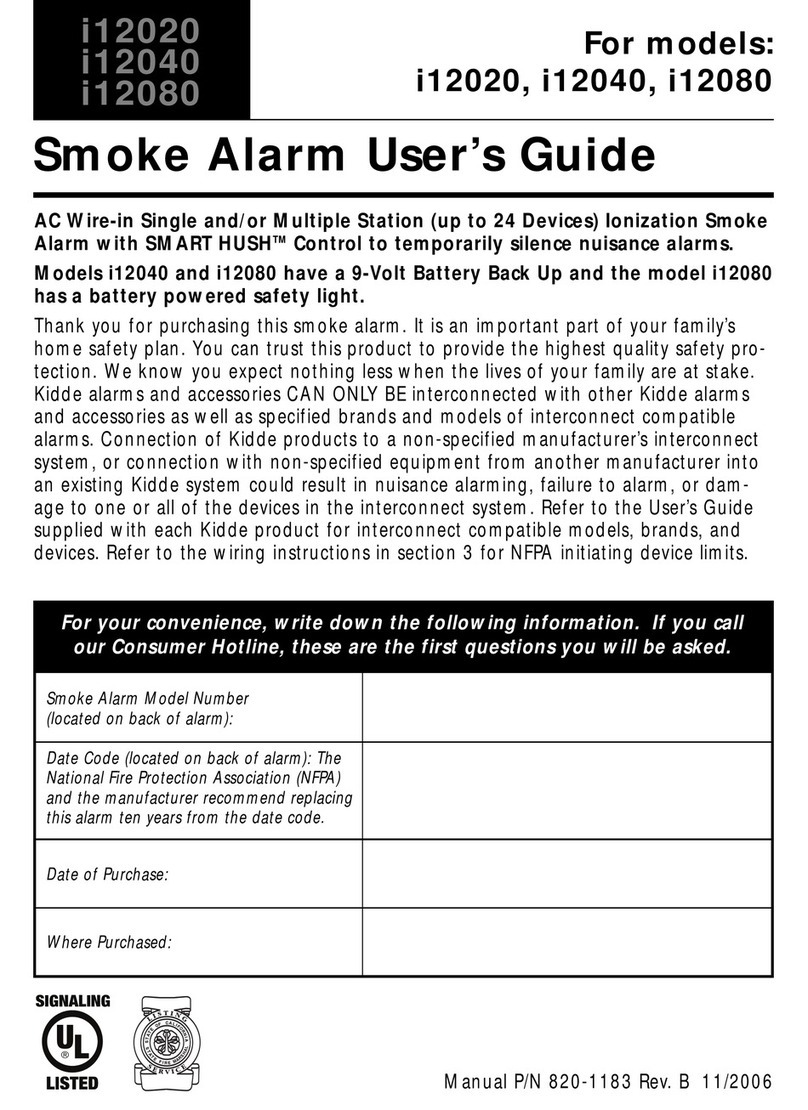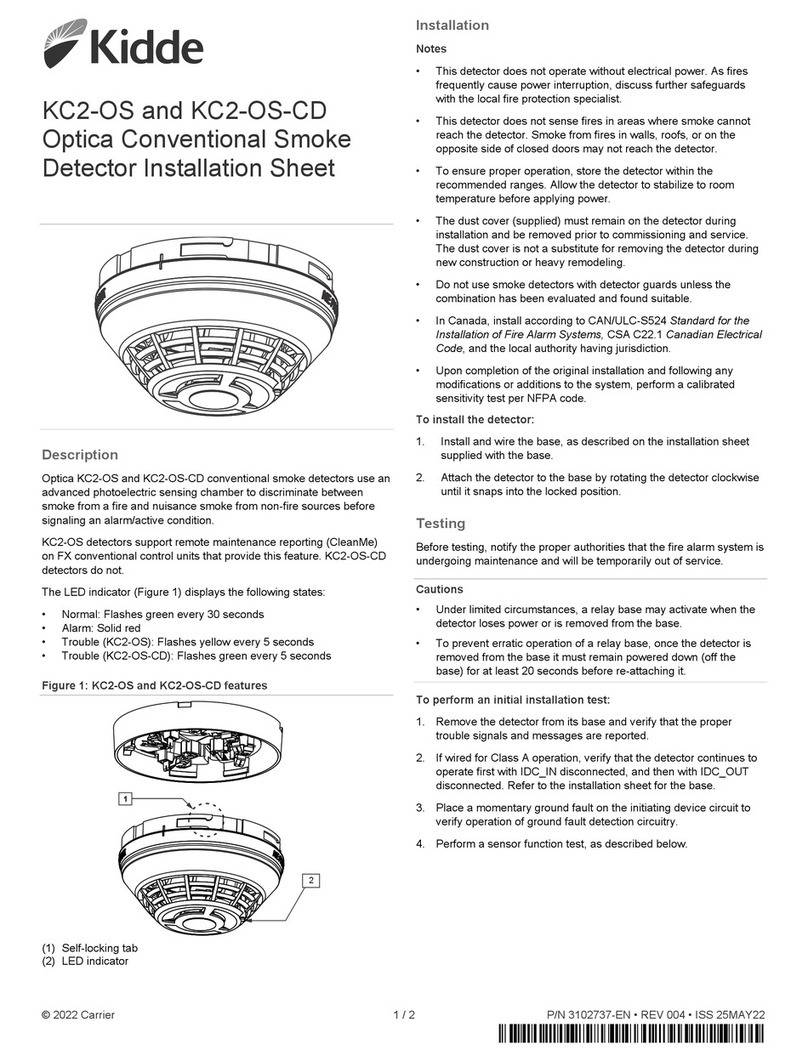
Recommended Locations
• Locate the first alarm in the immediate area of the sleeping
rooms. Try to monitor the exit path, as the sleeping rooms are
usually farthest from the exit. If more than one sleeping area
exists, locate additional alarms in each sleeping area (Image 1A).
• Locate additional alarms to monitor any stairway as stairways act
like chimneys for smoke and heat.
• Locate at least one alarm on every floor level (Image 1B).
• Locate an alarm in every sleeping room.
• Locate an alarm in every room where electrical appliances are
operated (i.e. portable heaters or humidifiers).
• Locate an alarm in every room where someone sleeps with the
door closed. The closed door may prevent an alarm not located
in that room from waking the sleeper.
• Smoke, heat, and combustion products rise to the ceiling and
spread horizontally. Mounting the smoke alarm on the ceiling in
the center of the room places it closest to all points in the room.
Ceiling mounting is preferred in ordinary residential construction.
• For mobile home installation, select locations carefully to avoid
thermal barriers that may form at the ceiling. For more details,
see Mobile Homes.
• When mounting an alarm on the ceiling, locate it at a minimum
of 10 cm (4") from the side wall (Image 2A).
• When mounting the alarm on the wall, use an inside wall with
the top edge of the alarm at a minimum of 10 cm (4") and a
maximum of 30.5 cm (12") below the ceiling (Image 2A and 2B).
• Put smoke alarms at both ends of a hallway or large room if the
hallway or room is more than 9.1 m (30 ft) long. For large
rooms, one smoke alarm is recommended for every 500 square
feet of floor space.
• Install smoke alarms on sloped, peaked or cathedral ceilings at
or within 0.9 m (3') of the highest point (measured horizontally).
NFPA 72 states: “Smoke alarms in rooms with ceiling slopes
greater than 0.3 m in 2.4 m (1 foot in 8 feet) horizontally shall be
located on the high side of the room.” NFPA 72 states: “A row of
detectors shall be spaced and located within 0.9 m (3') of the
peak of the ceiling measured horizontally” (Image 2B and 2C).
Installation
2

